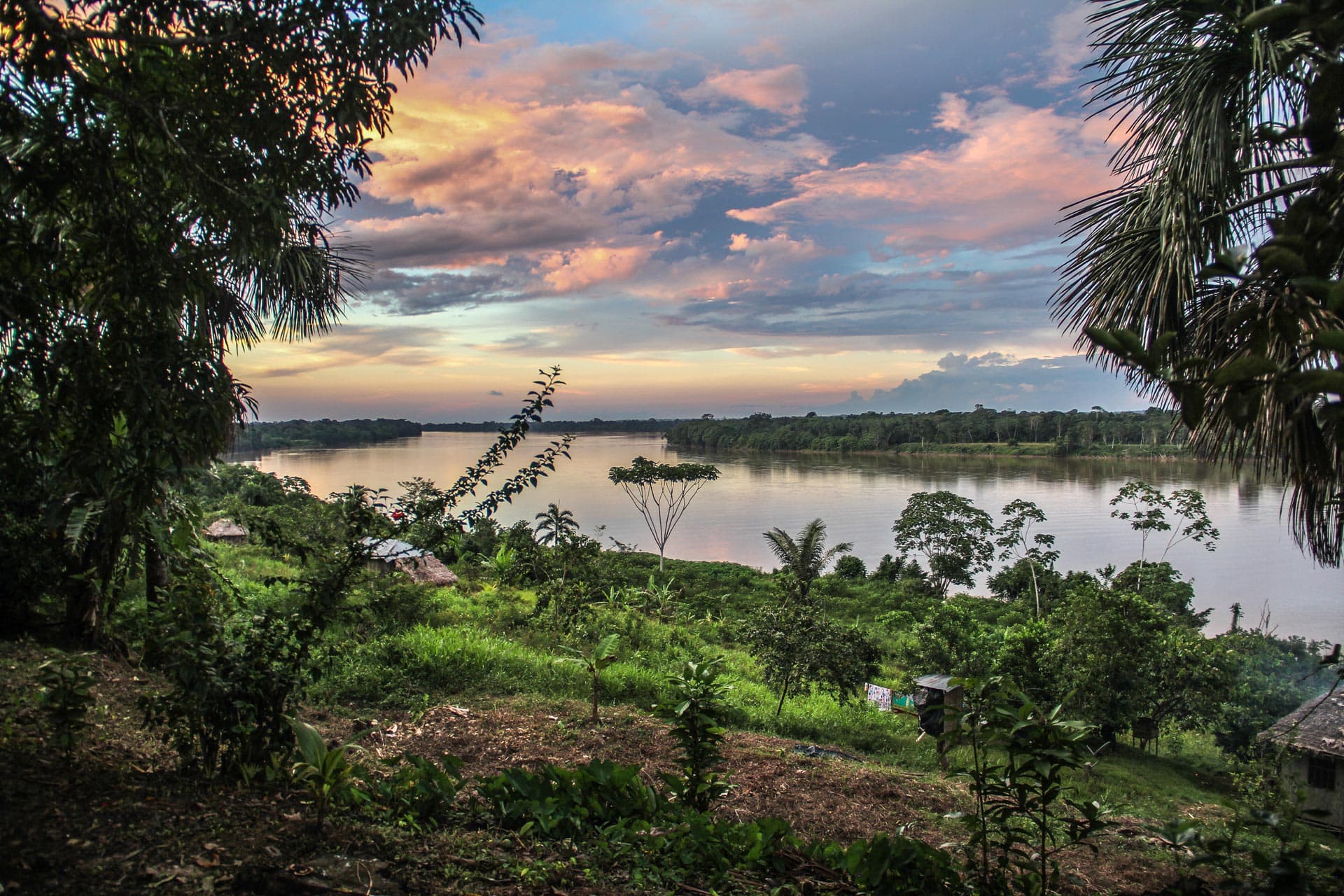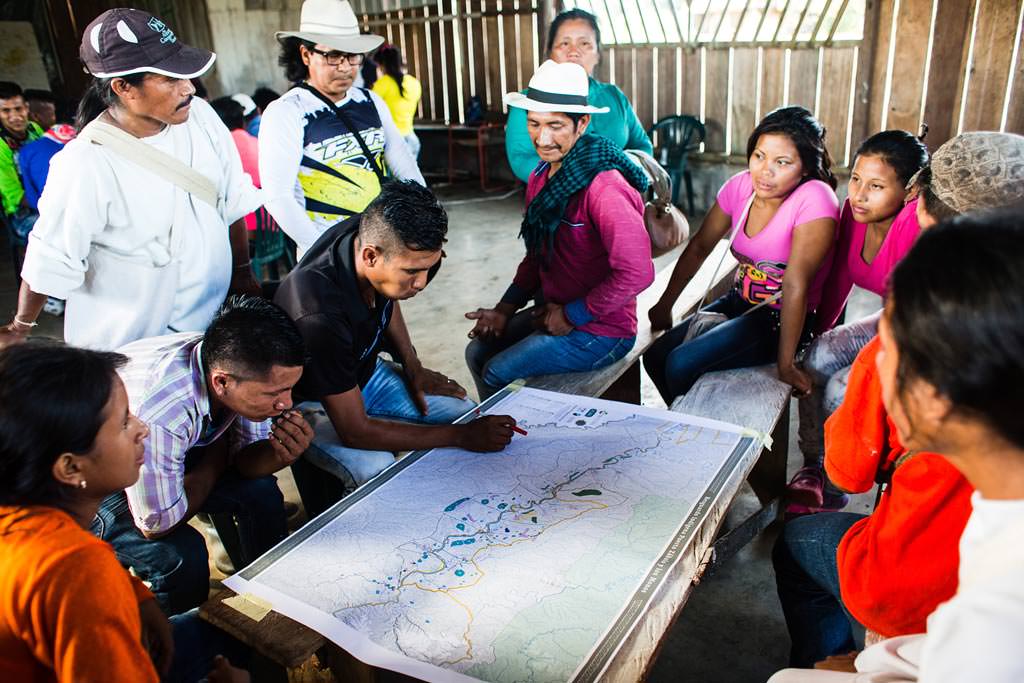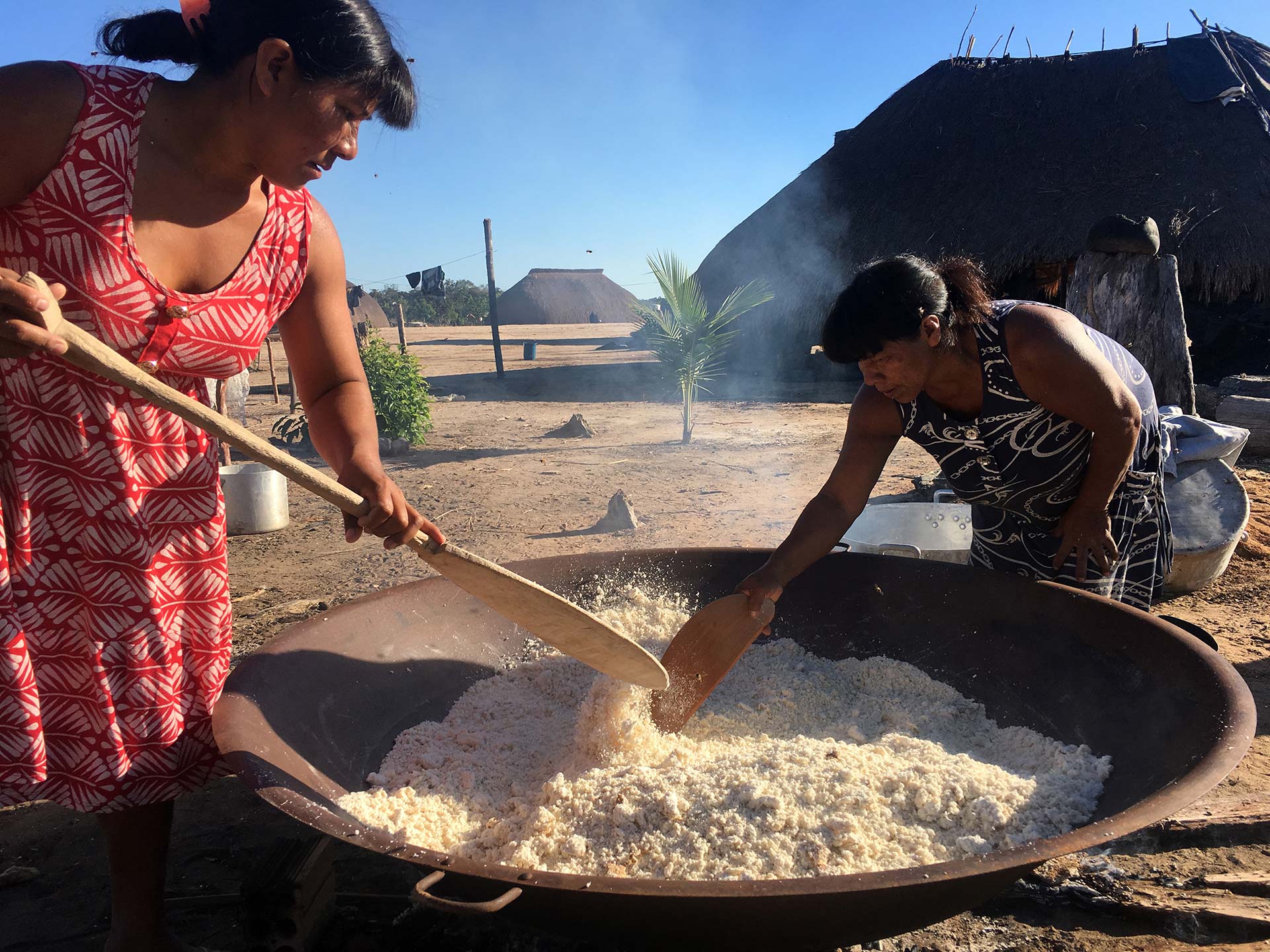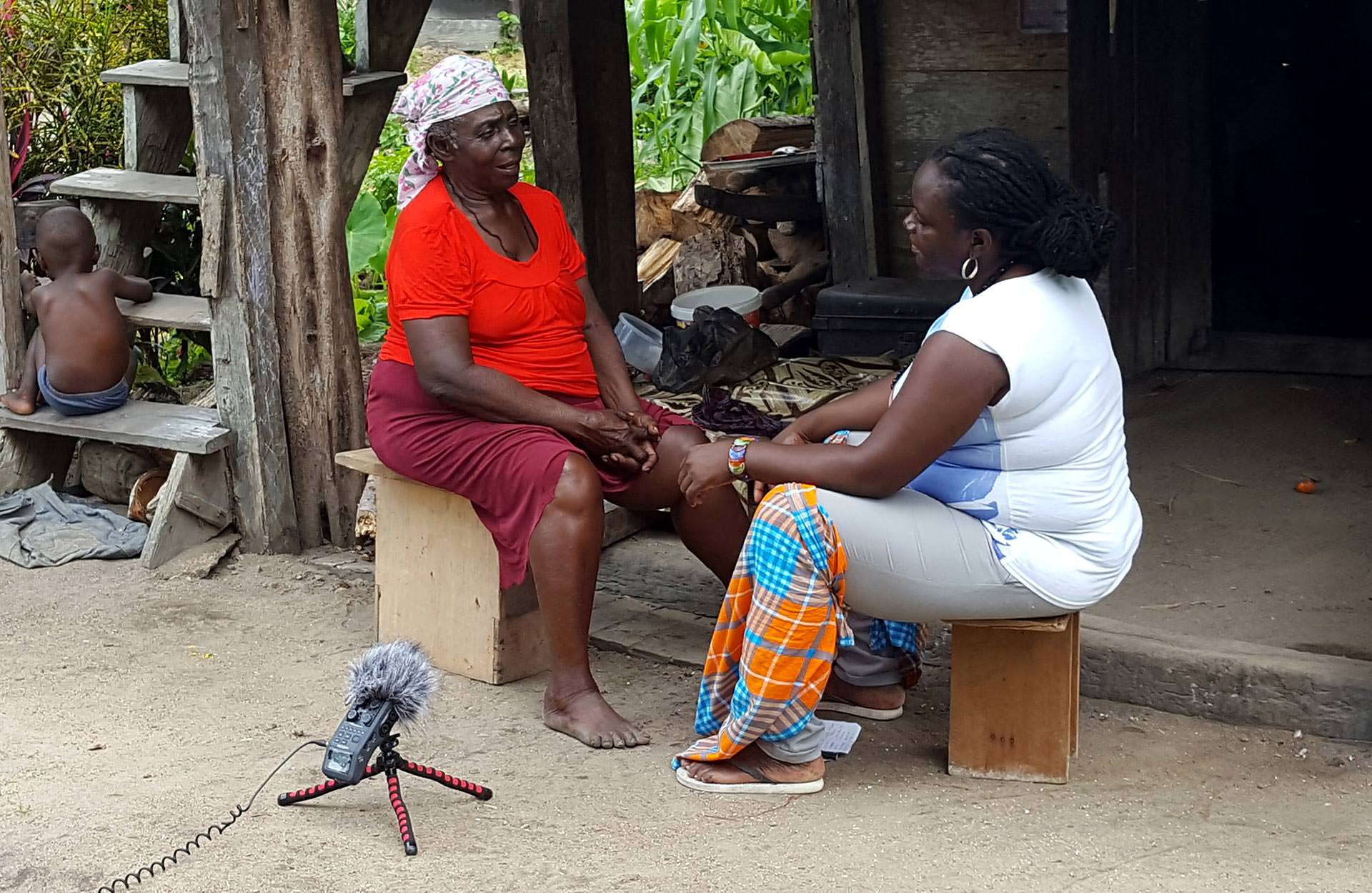
Land: Safeguard the forests and all that is in them

Land: The Connected Forest
Satellite images of our work areas are very powerful tools to track deforestation, revealing patterns we might not otherwise notice.
Images of the great Caquetá and Putumayo rivers, as they flow east from the Colombian Andes, show us how forests have become increasingly fragmented over the years. A mosaic of indigenous reserves, endangered forests, mega-agricultural projects, national parks, and degraded lands exist side by side. Some parks are too remote to be effectively guarded. Some reserves are too small to sustain their communities.
How can we reconnect the rain forest?
A Land strategy for Colombia creates connected corridors of protected areas. We work for the legal expansion of indigenous reserves, especially as buffer zones alongside the parks, and we help create detailed land management plans to ensure sustainability. With proper support, communities can often reclaim their ancestral territories, and restore their forests and river valleys.
The work of connectivity is a slow and deliberate process, involving collaboration on a massive scale. A corridor of protected areas along more than thirty-seven thousand square miles of Amazon watersheds was connected, via legal reserve expansions, in December of 2017.
Livelihoods: Sustain the Lives of Local People

Livelihoods: The Generous Forest
As western consumer goods infiltrate even the most remote forests, communities that once thrived without money now need ways to pay for their conveniences. Jobs in gold mining or other destructive industries lure young men away from their villages. In many cases, women must fend alone for their families.
Our new strategy of Livelihoods was developed in part to find sustainable sources of cash income that will strengthen local economies and protect the forest. Together with our partners, we are exploring the crafting and marketing of new forest products in a variety of pilot projects.
-
Colombia:
members of communities along the Caquetá River cultivate cacay trees that produce high-value oils for the international cosmetics market.
-
Suriname:
indigenous and Matawai communities make handicrafts, and grow and market unique ground peppers, herbal teas, and wild honeys for sale in the city.
-
Brazil:
the women of Ulupuene process farinha, a staple starch in the Amazon, for sale in local markets.
Governance: Strengthen Cultures and Increase Communities’ Self-Determination

Governance: Stories and Survival in the Forest
Along the Saramacca River of Suriname live the Matawai, descendants of Africans who escaped slavery by fleeing into the surrounding jungles. As we mapped their territories, we learned that Matawai elders have stories connected with over one hundred points on the map.
What do stories have to do with survival?
Rainforest survival depends on memory. Place-based stories can help a people remember where food or water can be found, or where dangers lie hidden. More importantly for the Matawai, the stories reinforce their cultural and spiritual connection to their territory, which makes them want to safeguard it. But the stories are in danger of dying out.
We work with communities to ensure that knowledge transmission continues. This is an important component of Governance. We’ve trained local youth to record the stories of their elders on audio and video, and together we are producing an interactive map of the Matawai territory. The stories of the Matawai will be connected to their places on the map, preserving their rich and illuminating cultural and biological information.

